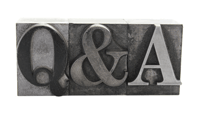Q & A Corner - Issue #13

NASET Q & A Corner
Question and Answers on Highly Qualified Teachers Serving Children with Disabilities
Introduction
The Individuals with Disabilities Education Improvement Act of 2004 (IDEA 2004) requires that all public elementary and secondary special education teachers be “highly qualified” as special education teachers. The definition of “highly qualified special education teachers” in the IDEA [20 U.S.C. 1401(10)] is aligned with No Child Left Behind's highly qualified requirements under that statute at section 9101 of the Elementary and Secondary Education Act (ESEA) [20 U.S.C. 7801(23)] and the implementing regulations at 34 CFR §200.56. Section 300.18(g)(1) of the IDEA regulations states that a teacher who is highly qualified under section 602(10) [20 U.S.C. 1401(10)] of IDEA shall be considered highly qualified for purposes of the ESEA. Section 300.18 of the IDEA regulations establishes requirements for special education teachers in general, as well as those teaching core academic and multiple subjects and those not teaching core academic subjects. In addition, it establishes requirements for special education teachers teaching to alternate achievement standards and describes alternative routes to certification. The regulations also clarify what it means to be a “new” special education teacher and that the highly qualified teacher requirements do not apply to teachers hired by private elementary schools and secondary schools.
The focus of this NASET Q & A Corner will be to answer questions on the topic of highly qualified teachers serving children with disabilities
NASET Members - Login to access this issue of the NASETQ & A Corner